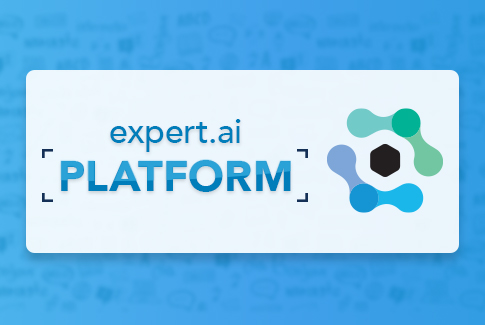
Language is the backbone of nearly every industry. Without it, nothing makes sense, and nothing gets done. But what happens when you have more language data than you can effectively process? Best practices suffer while costly errors and redundancies increase — putting both business operations and client relationships at risk.
Ensuring that each document, and the language within it, is accurately classified based on your unique industry and company needs is critical for success. Thankfully, with the right natural language processing solution you can quickly and easily automate your document review processes, at scale.
Legal
Correctly interpreting the meaning of words and phrases is integral to many essential processes in the legal industry. However, when dozens or even hundreds of pages of legalese are being reviewed by human eyes, an error or oversight is likely to occur. More crucially, the relationships between the language in these documents may be missed entirely, resulting in a myriad of challenges and/or legal complications.
A natural language processing (NLP) solution not only reads and understands legal content quickly and accurately, but also automatically analyzes and classifies the critical textual relationships within said documents.
For example, if you’re reviewing a large volume of documents about a real estate proceeding, it is helpful to extract and categorize language data such as names, dates and monetary values. A robust NLP product helps you do just that while expediting contract review, legal research and critical decision-making — without sacrificing accuracy or best practices.
Media & Publishing
Without language, the media and publishing sector couldn’t provide the news and information that we all rely on. Now, thanks to the digital age, there are more media and publishing outlets than ever before. This has created unprecedented amounts of content and stiffer competition for attracting and maintaining readers. But, with the right NLP tool you can gain a competitive edge and improve the user experience by offering more personalized and relevant content.
An NLP solution like the expert.ai Platform enables you to automate content processing by tagging and classifying content according to topic or your own customized taxonomy. Applying this strategy, a reader who is interested in British politics can quickly and easily find the latest news on Brexit or Prime Minister Boris Johnson.
In addition, you can apply this tool to a wide variety of text-based sources such as documents, web pages, social media, news articles and other language-based assets. This creates more time for editorial processes as well as delivering news and insights. Best of all, this directly impacts user engagement and retention as you deliver more targeted content.
Financial Information Services
The linguistic data in financial documents is often complex and multilayered, leaving little room for error or misinterpretation. The best natural language understanding (NLU) platforms are built to tackle these challenges, at scale.
When an information platform leverages expert.ai technology, you enable smarter classification and indexing of textual documents, making it significantly easier to identify important relationships between the text in documents and between financial documents themselves.
For example, credit applications, which can be time consuming and tedious to review, can be automated and classified as “good” or “bad” according to industry and/or specific business standards. NLP has also become a critical implement in anti-money laundering processes.
Similarly, other features can be added on top of the core NLU system, enabling a host of powerful end user mechanisms. For example, features like linking, alerting, recommendation engines and even semantic search faceted navigation are also applicable.
Insurance
There are few text-based resources denser and more perplexing than insurance documents. Now imagine trying to make sense of the words and phrases in such texts consistently, without error or oversight.
Fortunately, with a powerful NLU classification system you can read and understand complex insurance policies in full. Through a simple review and analysis process, key information about coverage, exclusions and endorsements is extracted from each document. This allows each document to be automatically and accurately classified according to your predetermined taxonomy.
Likewise, NLP platforms such as expert.ai’s can assess documents for yes/no answers such as, “Does business interruption require physical damage?” as well as identify red flags like risk over exposure and policy misalignments. You can even compare documents for differences (e.g., your company’s standard policy document to that of a competitor). Most significantly, with aggregated visualized results, underwriters receive actionable insights in minutes not days.
Life Sciences
There have been incredible strides in the life sciences over the last decade, most of which have been aided by advances in technology. As a result, researchers are increasingly looking to the most cutting-edge technological advances to help them further scientific and medical progress. A classification-enabled NLP software is aptly designed to do just that. The expert.ai knowledge graph is an excellent example of this.
The knowledge graph enables you to group medical conditions into families of diseases, making it easier for researchers to assess diagnosis and treatment options. This classification technology has proved critical in furthering research in the fight against COVID-19.
Likewise, scientific literature, including clinical data, is also monitored from multiple data sources so researchers can find key data about the latest developments in the industry, according to their own preferred taxonomy. This, in turn, helps support the identification of new data elements which can be used to enrich the knowledge graph.
Understanding how to leverage NLP classification technology to streamline industry specific text-based processes can open up a whole new world of possibilities for your organization. How will you transform your industry with this innovative technology?


